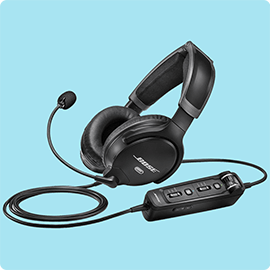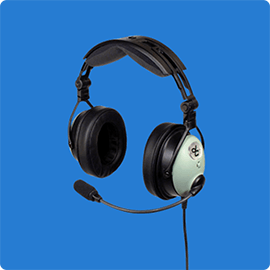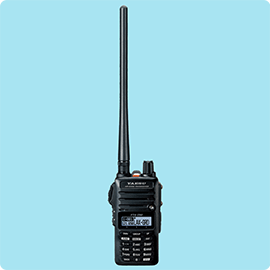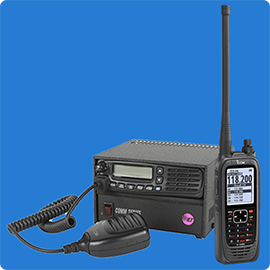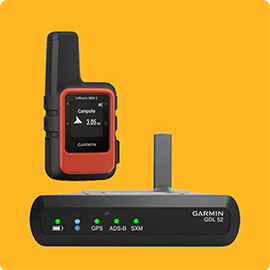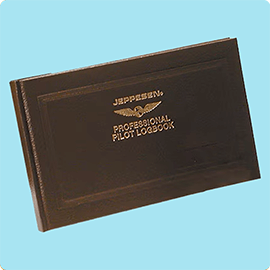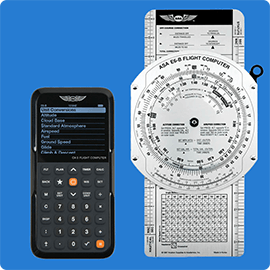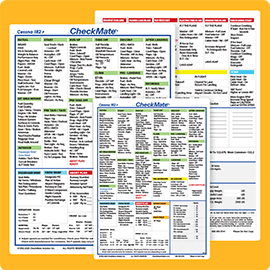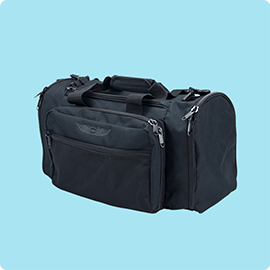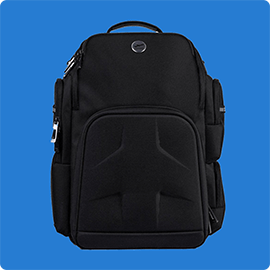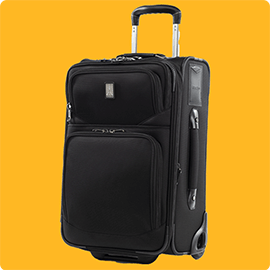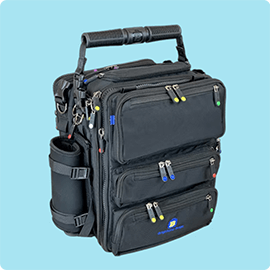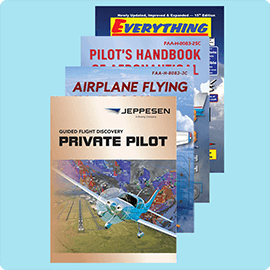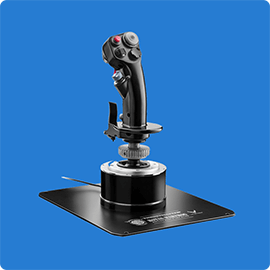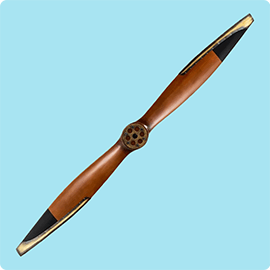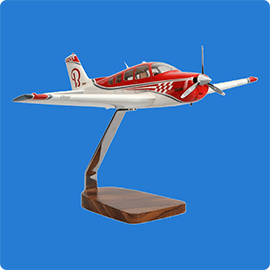Los dos tipos de confiabilidad que todo piloto necesita
Todo piloto necesita una radio portátil fiable, pero "fiable" puede significar dos cosas diferentes. ¿Será la robustez, la facilidad de uso y la infalibilidad de un Icom? ¿O la versatilidad y la gran variedad de funciones de un Yaesu, que actúa como un copiloto en la palma de la mano? Esta guía completa analiza las ventajas y desventajas de estas dos marcas líderes, con una tabla comparativa detallada y una sección de preguntas frecuentes para pilotos, para ayudarte a elegir el repuesto perfecto para tu mochila de vuelo.

Featured Pilot Gear
Browse our selection of high-quality pilot supplies! Your purchase directly supports our small business and helps us continue sharing valuable aviation content.
Cada piloto tiene sus preferencias en cuanto a fiabilidad. Para algunos, es una radio que nunca falla. Para otros, es un dispositivo portátil con herramientas adicionales para imprevistos. Aquí te explicamos cómo elegir el que mejor se adapte a tu estilo de vuelo.
Contenido
Por qué todo piloto necesita una radio portátil fiable
Imagínese esto: está navegando en un vuelo de larga distancia cuando, de repente, se queda sin comunicación por radio. Sin retorno de voz, sin control de tráfico aéreo. Es entonces cuando un transceptor portátil se vuelve indispensable. Es su red de seguridad, lista para restablecer las comunicaciones, copiar el ATIS desde la plataforma, coordinar en tierra o permitir que los alumnos practiquen la fraseología del vuelo sin necesidad de encender la aviónica.
Sin embargo, la fiabilidad tiene dos caras en el mundo de los dispositivos portátiles:
Sencillez robusta: Una radio que siempre se enciende, transmite con claridad y resiste el maltrato.
Capacidad versátil: Una radio que combina navegación, GPS y funciones inteligentes con un sólido rendimiento de comunicación.
Icom: la elección infalible de los profesionales
Icom es sinónimo de «respaldo confiable». La filosofía de la marca es simple: fabricar una herramienta que funcione siempre. Muchos modelos cumplen con exigentes estándares de durabilidad y están sellados contra la intemperie. Los controles son intuitivos, las pantallas son fáciles de leer incluso en cabinas iluminadas y el audio es potente y nítido, permitiendo escuchar las comunicaciones de control de tráfico aéreo por encima del ruido del motor.
¿Por qué los pilotos eligen Icom?
- Resistencia legendaria: Carcasas robustas, resistencia a la intemperie y pruebas centradas en caídas, vibraciones y temperaturas extremas.
- Claridad en medio del ruido: Una salida de audio potente y una calidad de recepción nítida ayudan a destacar en medio del caos de la cabina.
- Autonomía de la batería: Larga duración gracias a las baterías de iones de litio, además de bandejas AA opcionales en muchos modelos para seguir hablando si la batería recargable se agota.
- Interfaz de usuario sin complicaciones: botones grandes, recuperación de frecuencia inteligente “flip-flop” y 121.5 con una sola pulsación en los modelos aplicables.
Cuando todo lo demás falla, un Icom no. Esa es la esencia de la robustez y la simplicidad.
Yaesu: el navegador repleto de funciones
Yaesu adopta un enfoque diferente: fiabilidad a través de la versatilidad. Comienza con una radio COM robusta y luego añade herramientas útiles para cuando la situación se complica. Muchos modelos Yaesu incluyen navegación (VOR/LOC/ILS) y algunos incorporan GPS integrado con waypoints y función de aeropuerto más cercano. Algunos modelos selectos incluyen Bluetooth para auriculares inalámbricos o programación.
¿Por qué los pilotos eligen Yaesu?
- NAV/COM en la mano: Sintonice los VOR, vea la desviación de rumbo o supervise el ILS, todo sin tocar el panel.
- GPS en unidades seleccionadas: Los puntos de ruta, las lecturas de posición y la función "más cercano" pueden mejorar el conocimiento de la situación cuando falla la aviónica.
- Formación y versatilidad: A los instructores de vuelo les gusta la flexibilidad; los pilotos con mentalidad tecnológica aprecian tener múltiples herramientas en un solo dispositivo.
- Fácil de usar: Los menús basados en iconos y los diseños inteligentes hacen que la curva de aprendizaje sea razonable.
Un Yaesu no es solo una radio; puede sentirse como un copiloto en la palma de tu mano.
Icom vs.Yaesu: cuadro comparativo
Los ejemplos que se muestran a continuación utilizan modelos populares. Las características exactas varían según la variante y la tanda de producción; consúltelo siempre en la página del producto.
| Característica | Icom A16 | Icom A25N | Yaesu FTA-550L | Yaesu FTA-850L |
|---|---|---|---|---|
| Tipo de núcleo | Solo COM | NAV/COM | NAV/COM | NAV/COM + GPS |
| Potencia de transmisión | Potencia portátil de “6 W” | Potencia portátil de “6 W” | Potencia portátil de “5–6 W” | Potencia portátil de “6 W” |
| NAV/ILS | - | VOR/LOC/ILS (depende del modelo) | VOR/LOC/ILS | VOR/LOC/ILS con CDI en pantalla |
| GPS | - | GPS integrado con navegación simplificada por puntos de ruta |
No | GPS integrado (puntos de referencia/cercano) |
| Opciones de energía | Batería recargable de iones de litio; bandeja AA opcional | Batería recargable de iones de litio; bandeja AA opcional | Batería recargable de iones de litio; versión AA disponible | Batería recargable de iones de litio; |
| Durabilidad | Resistente a la intemperie; construido para soportar golpes. | Resistente a la intemperie; probado según estándares exigentes | Resistente a la intemperie; construcción sólida | Resistente a la intemperie; pantalla a color |
| Fortalezas destacadas | Audio muy potente; interfaz de usuario sencilla; gran autonomía | Pantalla grande; 121,5" con un solo toque; construcción robusta | Excelente relación calidad-precio en NAV/COM; menús intuitivos. | Bluetooth en versiones seleccionadas; repleto de funciones. |
| Ideal para | Respaldo robusto, alquileres, entrenadores | Pilotos IFR que buscan un NAV/COM sencillo y resistente. | Respaldo todo en uno económico | Pilotos con conocimientos tecnológicos avanzados, instructores de vuelo, amantes de la redundancia |
Preguntas frecuentes
¿Cuál es el alcance de transmisión de una radio de aviación portátil?
Los radios portátiles VHF tienen alcance visual directo. Desde el aire, se puede esperar un alcance de 8 a 10 millas náuticas fácilmente, y a menudo mucho mayor en altitud (más de 20 a 30 millas náuticas). En tierra, el alcance disminuye debido al terreno y las construcciones. La calidad de la antena y colocar el radio cerca de una ventana ayudan. Conectarlo a una antena externa de la aeronave (si es posible) puede aumentar considerablemente el alcance.
¿Puedo usar una radio portátil como mi radio principal?
Es legal en muchas operaciones y común en planeadores, ultraligeros o aviones antiguos, pero en aviones de aviación general certificados, una radio portátil es la mejor opción como respaldo . Las radios instaladas con antenas externas superan a las portátiles y se integran con el panel de intercomunicación/audio. Si el panel falla, una radio portátil puede permitirle aterrizar con total seguridad.
¿Cuánto duran las baterías?
La mayoría de los dispositivos modernos ofrecen una autonomía de un día completo de uso mixto con sus baterías de iones de litio (normalmente entre 8 y 12 horas con transmisión ligera). Una transmisión intensa reduce la autonomía. Mantenga la batería cargada y considere llevar una batería de repuesto o una bandeja de pilas alcalinas para jornadas largas.
¿Existe alguna ventaja en incorporar GPS o navegación?
Sí, sobre todo como último recurso. La navegación (VOR/LOC/ILS) puede proporcionar indicaciones de rumbo si el panel se apaga. El GPS en algunos modelos añade puntos de ruta y la información del aeropuerto más cercano para mejorar la percepción de la situación. Si ya vuela con una EFB y GPS en el panel, estas funciones ofrecen una redundancia útil; si no, le brindan mayor tranquilidad.
¿Qué fuente de alimentación es la mejor como verdadera fuente de respaldo?
Las pilas alcalinas AA son la mejor opción para emergencias. Las baterías de iones de litio son ideales para el uso diario, pero se descargan lentamente con el tiempo. Un paquete sellado de pilas alcalinas nuevas en tu mochila te servirá durante meses. Muchas radios incluyen un compartimento para pilas AA; añade uno a tu equipo.
¿Qué accesorios debería considerar?
Un adaptador para auriculares (si no viene incluido), una antena de repuesto o una antena externa portátil, un portapilas AA, un clip para cinturón o una correa, y una funda acolchada. Si su modelo lo permite, un cargador de 12 V para barco o coche también le será útil.
¿Solo COM o NAV/COM? ¿Cómo debo elegir?
Si valoras la simplicidad y la máxima resistencia, un modelo solo con COM es perfecto. Si vuelas IFR o simplemente deseas mayor redundancia, un NAV/COM, y posiblemente GPS, añade funcionalidad sin necesidad de llevar otro dispositivo.
¿Algún consejo rápido antes del vuelo para dispositivos portátiles?
- Cargue la batería de iones de litio antes del vuelo; compruebe las fechas de caducidad de la bandeja de pilas AA.
- Almacena las últimas frecuencias utilizadas y las frecuencias locales para una recuperación rápida.
- Mantén la radio y el adaptador donde puedas alcanzarlos con los cinturones abrochados.
- Realice una prueba rápida de radio en la rampa (en una frecuencia apropiada) para confirmar la transmisión/recepción y el audio.
Conclusión: Elige tu tipo de confianza
Algunos pilotos prefieren una radio robusta e infalible. Otros, en cambio, buscan una herramienta multiusos compacta que también sirva para la navegación. Ambas opciones son válidas y ofrecen mayor seguridad que volar sin un sistema de respaldo.


